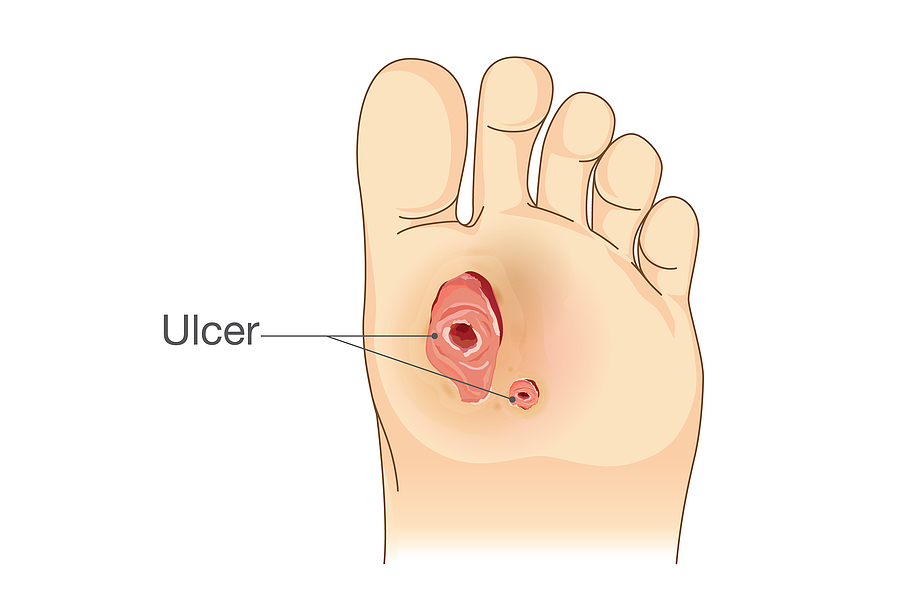Foot Ulcers – A Significant Problem in Diabetes
Healthful Vitality | 09/18/2021 | By NP Contributor | Foot Ulcers – A Significant Problem in Diabetes.

Diabetes is the primary cause of slow healing foot ulcers. Unfortunately, untreated they are also the number one non-traumatic cause of foot amputations globally.
A foot ulcer is quite a frequent problem, with studies showing that above 10% of those living with diabetes are also living with foot ulcers at any given time.
It would be wrong to reject them as a minor hassle. If not treated well, they may become infected and start influencing deeper tissues. Infection may even spread to cause gangrene, resulting in amputation and even fatal outcomes.
What causes foot ulcers in diabetes?
Foot ulcers are pretty rare among healthy adults. Even if they do occur, they heal quite well or respond well to the treatment.
Heavy smoking used to be one of the major causes of peripheral arterial diseases and foot ulcers. However, thanks to awareness, much lower rates of tobacco smoking, it is not now a significant cause of such ulcers. Unfortunately, but regretfully, people living with diabetes are still increasing.
There are many reasons for such severe ulcers in those living with diabetes. The number one cause is the disruption of blood flow. In diabetes, both larger and smaller blood vessels are affected. It means much less blood flow to peripheries. It means less supply of nutrients, poor local immune response, and thus even a minor cut or wound may convert to a non-healing foot ulcer.
Nerve damage is another cause of foot ulcers. Many people with diabetes have a low sensation of pain. These individuals may damage their feet, and yet they might not feel it. All this means that they often see their wound when it has been already severely infected.
High blood sugar makes healing worst. In addition, it affects local immune responses, thus, a greater risk of the wound getting infected.

Risk factors for foot ulcers
Certain factors are frequently associated with the high prevalence of foot ulcers among people with diabetes. Poorly fitting shoes remain the primary cause. Poor foot hygiene, improper cutting of foot nails also increases its risk. Other risk factors are alcohol consumption, smoking, obesity, kidney disease, eye disease, etc.
Managing foot ulcers
Admittedly, these ulcers are so challenging to manage that treating them is emerging as a separate field of medical science. They are treated by combining various pharmacological and non-pharmacological means.
Needless to say, that foot ulcers won’t heal as expected if one does not control blood sugar levels.
Among non-pharmacological means are ways of reducing pressure on parts of the foot, protecting it. Thus, one may use specifically created shoes, casts, foot braces, and shoe inserts.
In many cases, medical treatment would be a combination of surgical removal of dead and infected tissues (debridement) and various topical and systemic drugs. In addition, doctors may prescribe antibiotics, drugs to boost metabolism. Finally, keeping ulcers dry with frequent dressings is essential.
Prevention is the best policy
As these ulcers are so challenging to treat, prevention is the best policy. Those at risk must wash their feet every day, keep toenails trimmed, check their feet daily, change socks, wear properly fitting shoes. Visiting a foot specialist (podiatrist) may also help in many cases.
